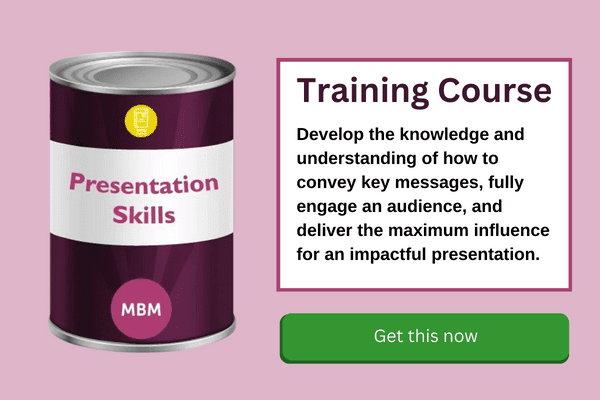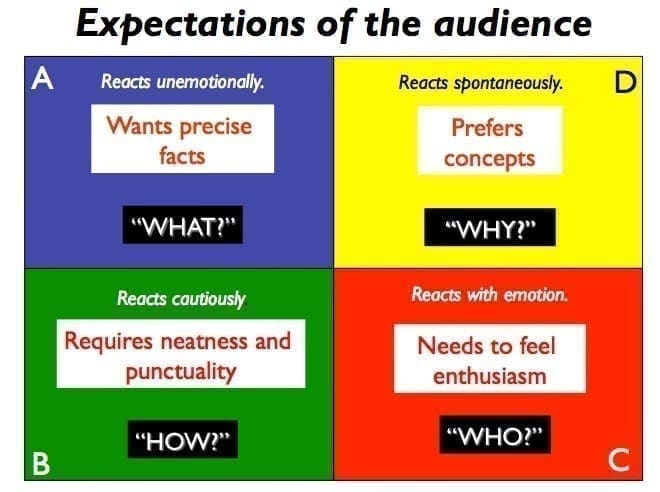Ensure Your Presentation Will Deliver the Maximum Influence
You’ve spent days, hours and some late nights building a great presentation. Your conscious that you think it’s great, but will they? You’ve still got a few hours left today before you present tomorrow, and you have an opportunity to make it the very best. Instead of fiddling with the font, changing an image for a slightly better one, or adding ‘just one more slide’, we suggest that you take the opportunity to increase the influencing power of your presentation with 3 ways to check that your presentation will deliver with maximum influence:

1. The Change Formula
The change formula was created by David Gleicher in the early 1960s. This was later refined by Kathie Dannemiller in the 1980s, according to Wikipedia. The change formula consists of 4 parts in an equation written as:
- D is for Dissatisfaction – How dissatisfied is the person with the current situation?
- V is for Vision – How much does the person see a vision for how it could be?
- F is for the First step – How well can the person understand the first steps that need to be taken?
- R is for Resistance – How much resistance is there to change?
The formula works by each of the first 3 parts being multiplied, and if they are bigger than the resistance, change happens. If any of these first 3 parts are zero, then the multiplication makes the sum of the 3 parts very low, and the chances of overcoming the resistance are too very low.

Action: Review your presentation and identify that ‘D’, ‘V’ and ‘F’ are included and persuasive.
2. The 4 Preferences of The Brain
Many people have at one time, or another, taken a psychometric test to understand themselves better. From Firo-B to Myers-Briggs to Drivers, and so on. We use the HBDI throughout our training with learners because it is simple to understand, effective, and remembered years later. Also, Peter Drucker wrote about the benefits of using HBDI ® in the Harvard Business Press.
In essence, each of us has one preference of how we prefer to think, communicate and also receive information. The more we, as presenters, can communicate in that person’s ‘language’ or communicate to all 4 parts, if there is an audience, the greater our influence.

HBDI ® identifies how we prefer to think. Either in facts, future, form or feelings. Whilst we cannot ask each member of the audience to first complete an assessment before we present, we can check that we are broadly appealing to ‘the whole brain’.
Action: Review your presentation and ensure that:
- For the fact-based thinkers, you are including the facts.
- For the future based thinkers, you include a vision of what it could look like. An image would be handy here.
- For the form-based thinkers, you are including a plan.
- For the feeling based thinkers, you are demonstrating that you have considered the impact on the people.
3. The Three Modes of Persuasion

The Greek philosopher, Aristotle, wrote about the 3 modes of persuasion; logos, pathos and ethos. By understanding these 3 modes better we can more strongly influence our audience by using all 3 modes. ‘Logos’ is logic and needs very little explanation, except to say that not all presentations make logical sense when delivered because there is always the danger that one question pulls the brick that ‘opens the floodgates’. This is where we need those internal people who ask the questions that we don’t want to hear before we present externally.
The next two are less used and are just as powerful; ‘pathos’, which is emotion and ‘ethos’, which is credibility. Pathos is about your delivery. Many presenters spend forever tweaking the slides and then spend no time on delivery. The delivery is as important as the content. Either through practising delivery of your maximum influence presentation, or role-playing with a colleague, or highlighting where you want to emphasise a point, a little time on delivery is essential.
Ethos is essential because your logic might make perfect sense and your delivery was very animated, but if you are not credible, it would be like buying from an eBay seller that had a feedback score of 47.2%.
Action: Review your presentation and identify how you can improve your credibility with testimonials, an example of a previous piece of work done well, quote sources, share the view of experts, etc.
Also, for even more useful content on presenting, check out our ultimate guide on presentation skills.


